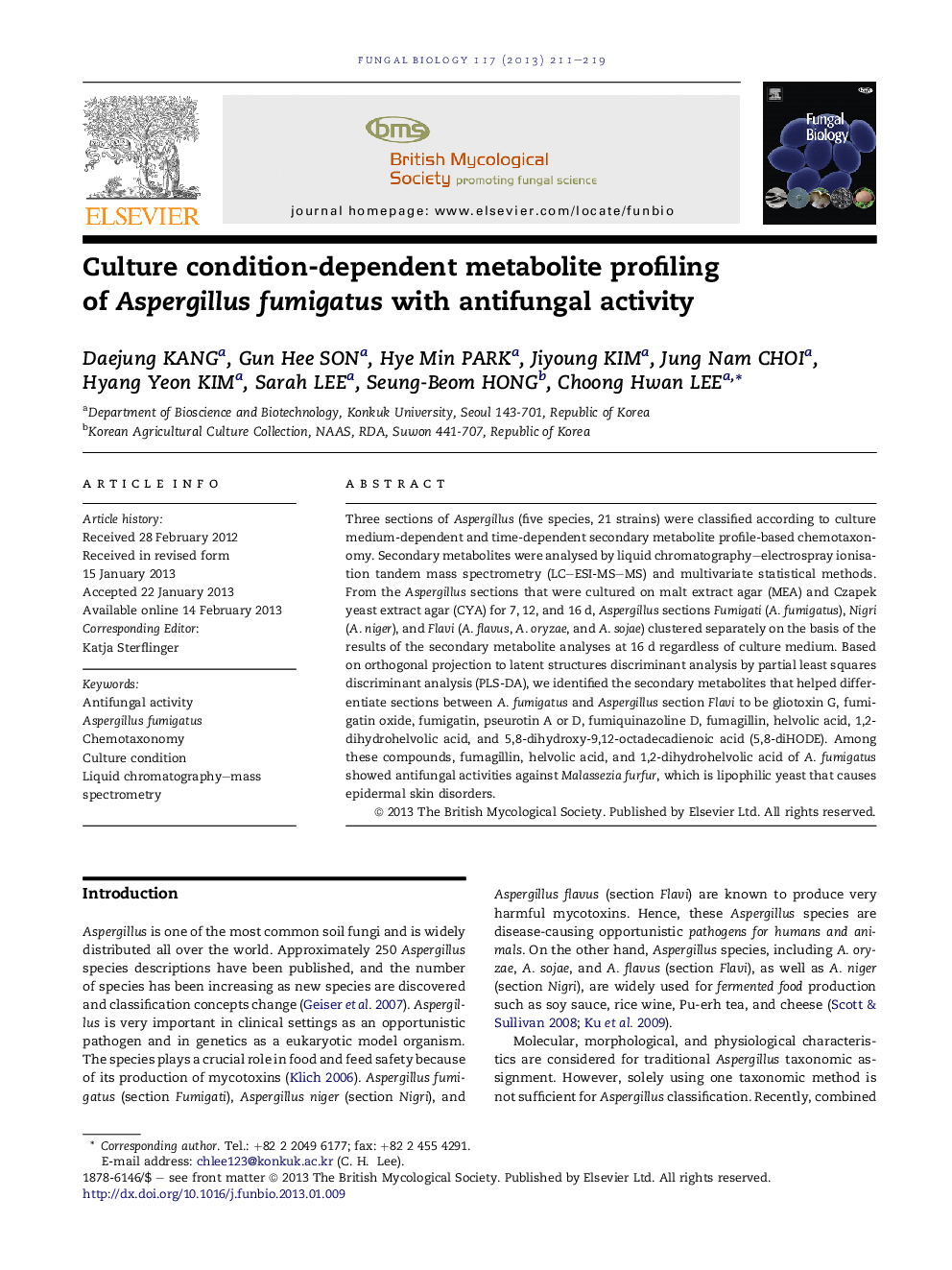| Article ID | Journal | Published Year | Pages | File Type |
|---|---|---|---|---|
| 4357110 | Fungal Biology | 2013 | 9 Pages |
Three sections of Aspergillus (five species, 21 strains) were classified according to culture medium-dependent and time-dependent secondary metabolite profile-based chemotaxonomy. Secondary metabolites were analysed by liquid chromatography–electrospray ionisation tandem mass spectrometry (LC–ESI-MS–MS) and multivariate statistical methods. From the Aspergillus sections that were cultured on malt extract agar (MEA) and Czapek yeast extract agar (CYA) for 7, 12, and 16 d, Aspergillus sections Fumigati (A. fumigatus), Nigri (A. niger), and Flavi (A. flavus, A. oryzae, and A. sojae) clustered separately on the basis of the results of the secondary metabolite analyses at 16 d regardless of culture medium. Based on orthogonal projection to latent structures discriminant analysis by partial least squares discriminant analysis (PLS-DA), we identified the secondary metabolites that helped differentiate sections between A. fumigatus and Aspergillus section Flavi to be gliotoxin G, fumigatin oxide, fumigatin, pseurotin A or D, fumiquinazoline D, fumagillin, helvolic acid, 1,2-dihydrohelvolic acid, and 5,8-dihydroxy-9,12-octadecadienoic acid (5,8-diHODE). Among these compounds, fumagillin, helvolic acid, and 1,2-dihydrohelvolic acid of A. fumigatus showed antifungal activities against Malassezia furfur, which is lipophilic yeast that causes epidermal skin disorders.
► Chemotaxonomy for Aspergillus species classification according to culture condition. ► Aspergillus sections were clustered separately based on the secondary metabolites. ► Fumagillin, helvolic acid, and 1,2-dihydrohelvolic acid showed antifungal activity.
